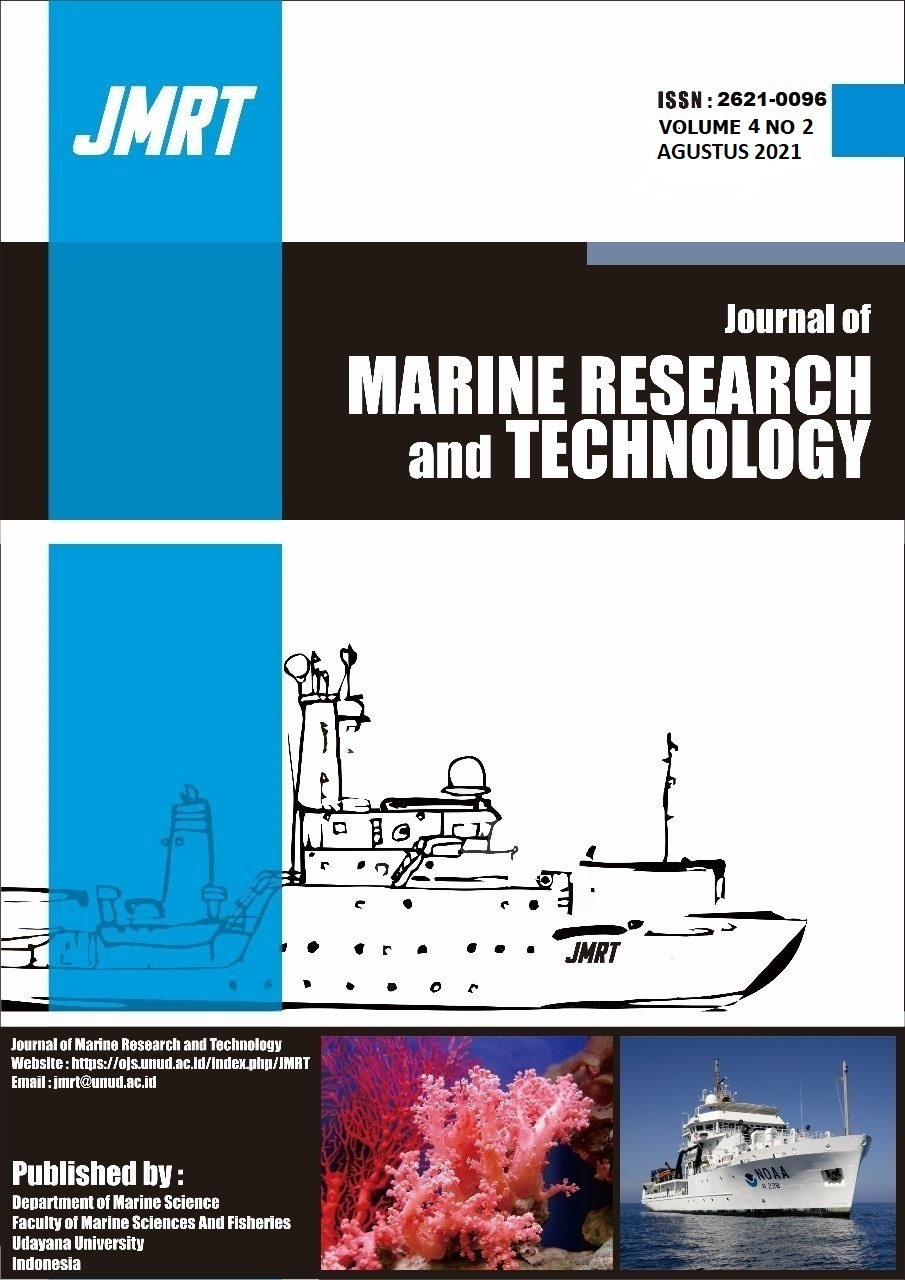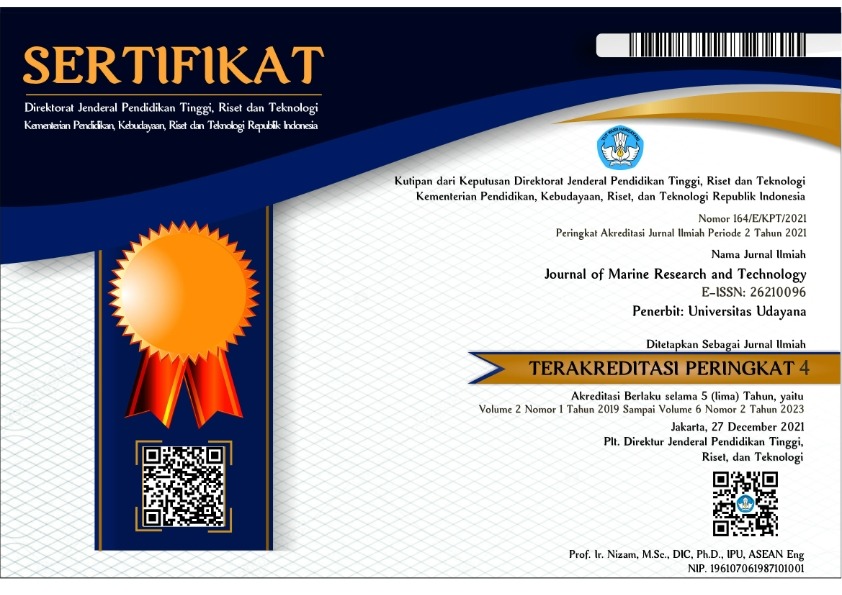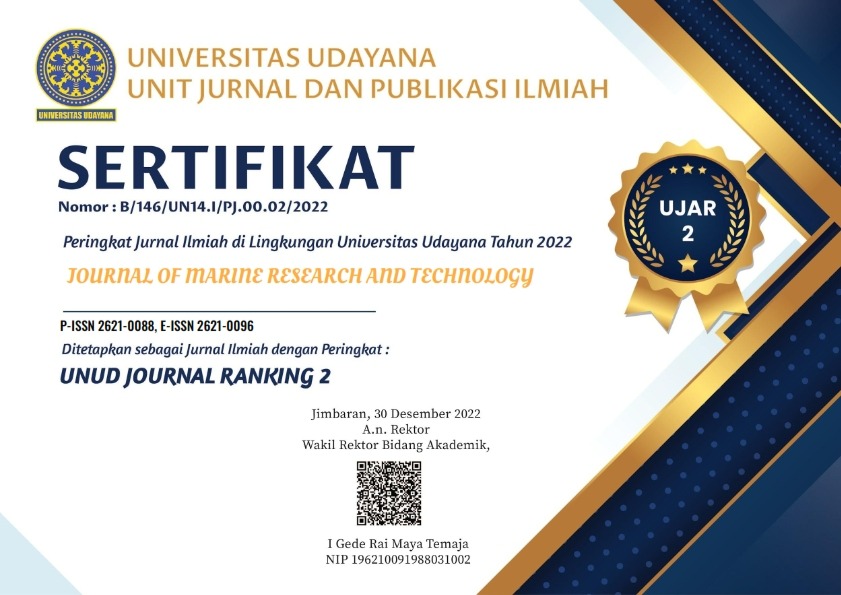Analisis Filogenetik Ikan Tuna (Thunnus spp.) yang didaratkan di Pelabuhan Benoa, Bali
Molecular genetic; Tuna; Benoa; Phylogenetic
Abstract
Tuna is one of the largest fisheries commodities in Indonesia after shrimp and demersal fish. The genus Thunnus is a type of tuna that dominates the international market. The genus Thunnus consisted of seven species of tuna. In some cases, the same morphological character has caused misidentification and data collection on tuna species. Therefore, this study aimed to identify tuna species that are landed at Benoa Harbor and analyzed their phylogenetic relationships. Species identification and phylogenetic analysed in this study used the mtDNA control region locus. The results of this study indicated that there are five tuna species landed at Benoa Harbor, namely yellowfin tuna (T. albacares), longtail tuna (T. tonggol), bigeye tuna (T. obesus), southern bluefin tuna (T. maccoyii), and albacore tuna (T. alalunga). Based on phylogenetic tree reconstruction, all samples were divided into five according to the number of tuna species resulted from molecular identification. Reconstruction of phylogenetic trees is supported by genetic distance between clades has a value of 0.075 - 0.212, with the closest kinship found in yellowfin tuna (T. albacares) with bigeye tuna (T. obesus) and the farthest found in yelowfin tuna (T. albacares) with albacore tuna (T. alalunga).
Downloads
Copyright Notice
The copyright to this article is transferred to Journal of Marine Research and Technology (JMRT). The copyright transfer covers the exclusive right and license to reproduce, publish, distribute and archive the article in all forms and media of expression now known or developed in the future, including reprints, translations, photographic reproductions, microform, electronic form (offline, online) or any other reproductions of similar nature.






